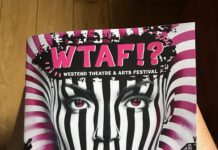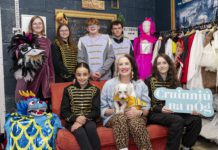Works by two Irish artists at the opposite spectrums of their artistic careers will feature in a dual exhibition at Claremorris Gallery from September 23 to October 7.
The gallery will show exhibitions from Brian Bourke, one of the most prominent artists of his generation of Irish painters, and emerging artist Peadar Jolliffe-Byrne as follows:
Born in Dublin in 1936, Brian Bourke is one of the most prominent artists of his generation of Irish painters and an enduring influence on his contemporaries with a career that has spanned over sixty years.
His work has been exhibited across Ireland, in Switzerland, England, France, Denmark, Norway and the U.S. and has exhibited in many major group shows.
He had regular solo exhibitions in Dawson Gallery, Dublin, from 1965 to 1975 and Taylor Galleries, Dublin, from 1978, the most recent being June 2019.
The subjects of his work over the years include self-portraits and self in landscapes; works from a life mask of William Blake with sunflowers, inspired by Blake’s poem “Ah Sunflower!”; a long series of Buile Suibhne which was shown in ROSC in 1988, and another series of paintings of Don Quixote.
He has worked in various other media apart from oil on canvas, such as etching, lithography and sculpture- bronze casting and woodcarving.
Peadar Jolliffe-Byrne was born in Harare, Zimbabwe 1991. In 1996, he relocated with his family to Pretoria, South Africa where he attended Pro Arte Alphen Park secondary school.
In 2008, he moved to Dublin, Ireland and later attended the Institute of Art Design and Technology (IADT) where he completed a BA in Art in 2016. Peadar was shortlisted for the Talbot Gallery Most Promising Graduate Award and was awarded the RHA Peer Residency in 2017.
In 2018, Peadar completed a MSc in World Heritage Management and Conservation at University College Dublin (UCD). In 2019, Peadar co-authored the Red Rock Management Plan 2020-2030 on behalf of Fingal County Council and Dublin Bay Biosphere Reserve.
Sweeney, Cursed with the Flying Madness
Sweeney, Cursed with the Flying Madness, will show seven paintings by Brian Bourke. This work from 1988 has never previously been exhibited but came to prominence last year when six works from this important series were acquired by the National Gallery of Ireland.
A trend emerged in Irish painting during the 1980s, where a number of Irish Visual Artists explored the ancient story of the Mad Sweeney, perhaps influenced by Sweeney Astray, Seamus Heaney’s version of the medieval Irish work Buile Suibhne, published in 1983.
Although, Bourke’s Sweeney actually took inspiration from Flann O’Brien’s absurdist novel, At Swim-Two-Birds, which features a translation of the Middle Irish romance Buile Suibhne.
‘Buile Suibhne’ or Mad Sweeney, is based on the story of a figure from early Irish literature created by many hands from the 9th century to the 16th century.
Sweeney, king of Dal Arie, was cursed by the priest, Ronan Finn, which condemned him to live life as half bird, half man, with none of the advantages of bird nor man. This madness forced him to be constantly on the move throughout Ireland, Scotland and England.
Brian created these paintings at St Mullin’s in Co Carlow, the place where the bird-king is reputed to have died. “St Mullin was real,” he says.
“He built a little church that’s mentioned in At Swim-Two-Birds, and it’s still there. That’s where Sweeney is supposed to have been speared to death by a jealous farmer whose wife was feeding him.”
Upland Folk by Peadar Jolliffe-Byrne
Upland Folk presents eight paintings by Peadar Jolliffe-Byrne, an emerging painter based between Mexico City and Leitrim. The exhibition was inspired by the research Peadar undertook in 2021 as part of his work on the UNESCO World Heritage Tentative List application for the cultural landscape of the Burren, Co. Clare, Ireland.
The Burren provides a plethora of inspirational starting points for any sort of artistic endeavour, ranging from its globally significant karst environment, to its extraordinary collection of well-preserved archaeological sites, to the unique ecological mosaic of its flora and fauna.
Yet perhaps, the most outstanding characteristic within this seemingly inhospitable landscape are the people who live there.
Timeless scenes, throughout the work, borrow from Irish history, mythology and folklore to depict narratives of light versus dark, good versus evil, and life versus death.
The work is inspired by the thousands of years of interaction between humans and the environment in the Burren Uplands, and how that relationship has shaped the cultural and ecological landscape we see today.
Interspecies dialogues and cross-cultural references highlight past beliefs that have continued into the present and look to continue into the future in a blend of cultural practices and beliefs












